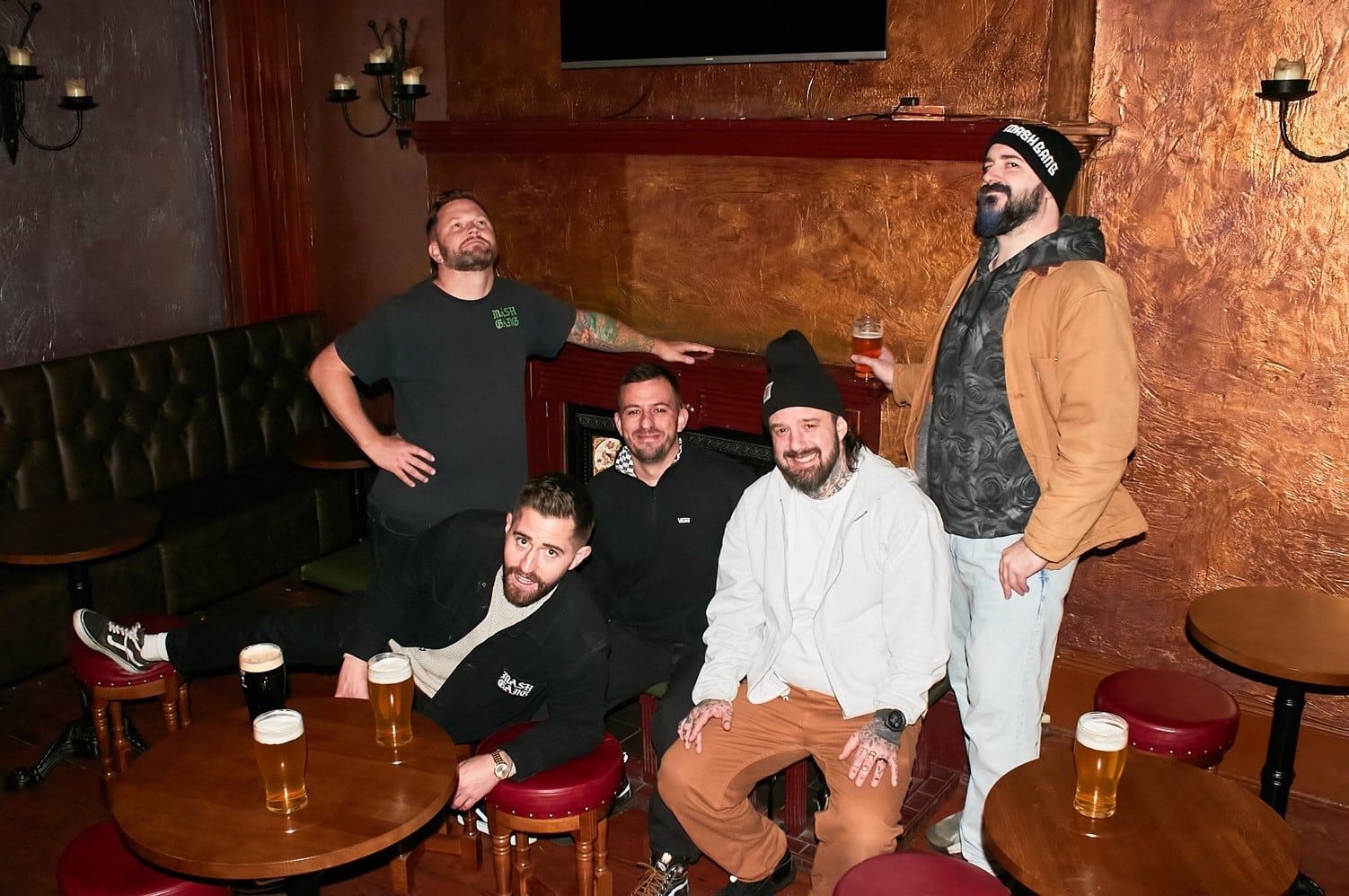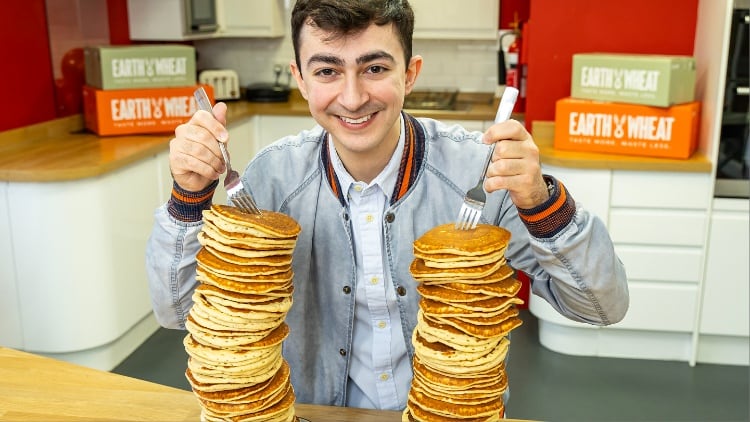The UN estimates that the food and drink industry use 30% of global energy and account for 20% of GHG emissions.
As a result, manufacturers are now facing a multitude of pressures to reduce their emissions. The UK Government has already implemented targets requiring all firms to reach net zero by 2050, while consumer purchasing habits have become ever more heavily impacted by a firm’s ‘green’ credentials.
In some scenarios, the pressure to impress has led to greenwashing – where companies present false or exaggerated environmental claims – and greenhushing – where organisations seek to obscure their true impact over fear of greenwashing accusations. Instances of both have sown distrust among the public and added to the scrutiny placed on every statement made about emissions.
However, coupled with tighter regulations, this could provide a more clear-cut path for manufacturers wanting to be ‘green’ honestly and openly in the future.
At the same time, new technologies are emerging that are making it easier than ever for firms to overhaul their operations and place sustainability at the centre of their approach.
Producers of cheese and energy
Somerset-based dairy farm Wyke Farms has long prioritised sustainability within its processes and, as a result, has been able to steal a march on many of its rivals within the dairy industry.
While the business has been in the same family for more than 160 years, it has always been willing to adapt throughout that time.
Rich Clothier, the manufacturer’s managing director, explained that the emphasis it has placed on reducing emissions, switching to renewable energy sources and investing in technology was passed down from his grandmother.
“Wyke Farms is a business that has sustainability in its DNA,” Clothier said.
“My grandmother used to say if you look after nature then nature will look after you. So in our business we try to treat everything as a finite resource whether that is water, plastic, energy etc.
“We are able to recycle and reuse up to 90% of the water from our dairy. The water is filtered through an ultrafiltration and reverse osmosis membranes. Typically, some dairies would operate using around one litre of water per litre of milk, [but] in our case we are able to use a tenth of that.”
Wyke Farms’ success in making its operations as sustainable as possible has been reflected in a series of awards and accreditations, including being named the first cheddar producer to achieve Carbon Trust Triple Standard in 2026.
And while being a low carbon business has its perks for the planet, Clothier also notes it has added benefits of making your business low cost.
“We generate all of our own electricity and gas from our own renewable energy plants both anaerobic digestion and solar on rooves,” he explained.
“Our anaerobic digesters run on dairy and farm waste to generate bio gas which runs our boilers. We also clean up the gas and inject it into the grid. The biogas also runs our own combined heat and power plants, which are large generators that we can harvest the heat from.
“We don’t waste any of the energy that we generate and we use all of the latest energy saving techniques, such as inverters and soft start motors combined with heat recovery from our cooling plants.”
However, generating and using renewable energy on site is not the only requirement of modern food and drink manufacturers. Given the interrelated nature of modern supply chains, Scope 3 emissions – which are defined as emissions generated by the activities from assets not owned or controlled by the reporting business – also factor into a firm’s overall footprint.
To this end, Wyke Farms works closely with all its suppliers to ensure they employ low carbon methods; even using waste material from its anaerobic digesters as a low-carbon fertiliser on the local Salisbury Plain arable farms.
Overall, Clothier believes these changes have made the business more “resource efficient”.
“Our sustainability mission has also diversified our business as we are now producers of energy as well as cheese,” he continued.
“We currently only use about a third of the gas that we generate, with the surplus green gas sold into the grid and supplying many local towns and villages in our region.”
Electrified processes deliver ‘significant GHG emission reductions’
As one of the largest meat producers in the country, Pilgrim’s UK partners with more than 1,000 farmers and delivers 25% of pig meat consumed in this country.
Operating 13 sites, including three abattoir/deboning sites and eight processing sites, the firm has continued to invest in green energy generation and cutting emissions at its plants.
Pilgrim’s currently has a target in place to reach net zero across Scope 1 and 2 by 2030, which covers emissions that a company makes directly and those that it produces indirectly. To meet these targets, the firm’s head of sustainability Matt Dight told Food Manufacture that investing in electrifying its heat generation was an area of focus.
“We currently use 100% renewable electricity, which is a mix of self-generation from solar PV on our manufacturing sites and procuring renewables from the grid, so any process that can be electrified is delivering significant greenhouse reductions for us,” Dight explained.
“We have recently grown our on-site renewables generation capacity with four new sites and further solar PV ground mounted and roof mounted systems planned in for 2024.”
Pilgrim’s had its Scope 1 and 2 target approved by the Science Based Targets initiative (SBTi) in 2021 and has since undertaken a “full net zero investment road mapping process”, aimed at identifying all potential projects that it could look to implement across its facilities.
This process, which was completed in 2023, involved modelling for multiple different future operational scenarios and then selecting an optimal investment roadmap for each site.
“Over the past 12 months, this activity has been underpinned by our commitment to spend £10m in capital expenditure to implement a series of process innovations and operational improvements to reduce GHG emissions,” Dight said.
“As a result of our efforts and investments to date, we’ve reduced our Scope 1 and 2 market-based GHG emissions by 62.5% since 2019.”
As far as Scope 3 emissions are concerned, Pilgrim’s UK has pledged to be net zero across its entire value chain by 2035.
Dight elaborated: “Between 2019 and 2022, we achieved a 9% reduction in total Scope 3 emissions. As we look ahead, we will continue our R&D programmes into Scope 3 emission reduction opportunities, with priority focus areas in agriculture, packaging, and transport.”
While firms have sought to implement measures to reduce emissions and switch over the renewable energy sources, infrastructure challenges persist that limit their ability to do more. In a recent Food Manufacture webinar, industrial policy officer at the Association for Decentralised Energy Oz Russell explained that dispersed manufacturing sites do not have the same access to new technologies as those located in clustered sites.
Pilgrim’s has come up against this challenge at some of its own plants and Dight has called on the UK Government to take action and “support the industry to help expand alternative energy generation capabilities”.
“We have seen real barriers that have prevented us from utilising on-site wind generation due to both restrictive planning requirements and the availability of connections to the grid,” he continued.
“One example being a wind turbine that would likely have been viable from a planning perspective, but the earliest we would be able to secure a connection to the grid was not until 2037. The connection is vital, without it the surplus energy wouldn’t be able to be used on site, meaning the project is not viable.”
Reducing emissions within brewing
While much environmental focus is positioned on the food sector, the thriving drinks industry should not be overlooked.
Mintel estimates that the UK beer market alone was worth £17bn as of 2023, with the country home to many prominent brewers. Heineken UK is one such example; responsible for a raft of well-known beer and cider brands, including Heineken, Strongbow, John Smith’s, Amstel, Birra Moretti and Old Mout.
When asked how it was planning to reduce its impact on the environment, the drinks giant said that it uses the Heineken group’s ‘Brew a Better World sustainability strategy’ as a framework for its UK arm.
“How we care for the environment is an integral part of how we will safeguard our company's future and protect the planet,” a spokesperson for the business told Food Manufacture.
One specific project the company pointed at was the £25m investment it made into its Manchester brewery, which involved the installation of heat pumps and the use of additional renewable energy.
The heat pumps, which are designed to capture waste heat and then reuse it elsewhere in the brewing process, were, in part, funded by a grant from the Department of Energy Security and Net Zero. Speaking at the time of the announcement, minister for energy efficiency and green finance Lord Callanan called it a “game changing project”.
“Heat pumps are key to helping us to decarbonise our heating and I’m delighted to see government funding go towards such an innovative scheme that will help cut emissions and show other businesses how to move away from costly fossil fuels,” he added.
Reflecting on the brewer’s progress made to date, the Heineken spokesperson said that between 2018 and 2022, it had reduced carbon emissions across its five UK production sites by 19%.
“We’ve made available £3m of funding to help our on trade customers with the cost of energy performance audits and premises improvements,” they continued.
“We will also be continuing with other initiatives such as our low carbon barley farming trials, net zero roadmaps for packaging, logistics, cooling and improving energy efficiency in our managed pubs.”
Carlsberg Marston's Brewing Company (CMBC) is another major beer maker operating in the UK, with three separate breweries. It produces beer for brands such as Carlsberg, Brooklyn and Kronenbourg, and has targeted reaching net zero across its value chain by 2040.
As part of its bid to achieve this goal, 100% of the electricity used by CMBC is generated from renewable sources. It has also already managed to hit an 18% reduction in carbon emissions between 2015 and 2022 at its largest brewery in Northampton.
Moreover, it has become actively involved in two initiatives aimed at addressing its Scope 3 emissions.
A spokesperson for CMBC told Food Manufacture: “In 2023 we signed up 23 British farmers to grow regenerative barley across 1,700 hectares of land and will start brewing with this in 2024. Carlsberg Danish Pilsner will be the first brand to use 100% regenerative barley by 2027.
“The practices used to grow this barley will help farmers lower their carbon emissions. We are also using a new barley variety, developed by Carlsberg Research Laboratory, which provides quality benefits for beer and uses less energy to brew (this will be used to brew in 2024).”
The second initiative involves a partnership with Renault Trucks, which has provided CMBC with two fully electric HGV trucks. These trucks are “the largest in the UK operated by a brewer” and are “capable of delivering over 10,000 pints of beer per day to pubs”.
“These are currently being used at the Cardiff and Essex depots; and in the future, more could be available for use,” the spokesperson added.
Targeting net zero throughout the supply chain
As discussed throughout, food and drink firms also need to consider emissions that are not directly related to their own operations by working with supply chain partners.
Olam Food Ingredients (ofi) is a ingredients and food solutions firm that supplies F&B customers around the world, and therefore has needed to work closely with the wider industry to support emissions reductions.
Explaining how ofi has approached easing its environmental impact, the firm’s global operations head of sustainability and environment Susanne Folkerts told Food Manufacture: “By taking action to develop innovative solutions that protect the planet, we’re offering our customers more sustainable choices – from the support we provide to the farmers we work with on the ground across the world, to the ways in which we process cocoa into high-quality ingredients at our facilities.”
One key project that ofi has developed is the Cocoa Compass, which involves the target to reduce natural capital costs by 30% across its operations by 2030.
“To help us reduce our greenhouse gas emissions and reach this goal, we introduced two new circular biomass boilers at our cocoa processing factories in the Netherlands and Germany,” Folkerts added.
“The boilers use waste cocoa shells, a by-product of the production process, as fuel to generate steam, which in turn powers the crafting of cocoa ingredients from our premium brand, deZaan.”
So far this project has led to positive results. In 2022, ofi used 8,000 tons of waste cocoa shells to generate green energy, which is the equivalent to using 3.4m cubic meters of natural gas.
This helped cut absolute CO2 emissions at its Koog aan de Zaan facility in the Netherlands by 23%.
Folkerts continued: “We expect this to increase to a 50% reduction overall. Whilst at our factory in Mannheim, Germany, the other shell boiler we have installed has the potential to provide up to 90% of the steam needed to power the facility, saving approximately 8,000 tons of CO2 annually.”
In addition, ofi recently announced the creation of a cocoa bean warehouse terminal which exclusively uses green energy at the Port of Amsterdam in the Netherlands.
“We believe this could lead to the reduction of 1,350 tons of CO2 per year, which is the equivalent of 67,500 trees absorbing carbon from the atmosphere,” said Folkerts.
Packaging is another potential contributor to emissions, with leading food processing and packaging solutions company Tetra Pak set to introduce a range of environmental initiatives across its site in 2024.
“Technology plays a crucial role in ensuring that energy is utilised in the most efficient manner,” a Tetra Pak spokesperson commented.
“Recognising this, we increased our on-site solar PV capacity by over 65% in only 12 months, which contributed towards achieving 84% renewable electricity consumption in our operations.”
Tetra Pak wants to see more collaboration between the food and drink sector and its supply chain in the race to net zero. It has taken a step in this sense by creating the Dairy Processing Task Force, which is a joint coalition that brings together in figures from across the dairy sector.
“We also advocate for predictable legislative ambitions and actions to drive ecological improvements while also levelling the competitive playing field for businesses,” the spokesperson continued.
“Policymakers can do this by mitigating transition costs and by promoting economic opportunities to accelerate transition journeys to production systems that address both planetary and dietary challenges simultaneously, recognising their interconnectedness.”
In the meantime, Tetra Pak is using its relationships with food and drink firms to develop integrated “solutions and components”.
“We are working continually to optimise the performance of our equipment, focusing on solutions that reduce energy and water demand, and provide alternatives to chemical-heavy clean in place (CIP) systems,” the spokesperson explained.
“Additionally, we will expand our collaborations with companies engaged in energy transition. [We recently] launched our Factory Sustainable Solutions business that focuses on finding opportunities and creating growth in the areas of energy optimisation, water recovery and CIP optimisation.
“This is one way we are answering the call from food and beverage customers, who are looking for strategic partners helping them to drive down carbon at every step of the value chain.”
Support for the food and drink sector
Embarking on the net zero transition is expensive and time-consuming and therefore can seem a daunting task. However, grant schemes, consultancies and government bodies exist with the purpose of making this process easier.
Associations
For example, Scotland Food & Drink Partnership’s Net Zero Commitment was introduced in 2021 to ensure that the Scottish food and drink sector understands net zero and the steps to get there.
“We’re continuing to provide leadership and guidance to the Scottish food and drink industry on its journey to net zero, with aims to educate and inspire the sector, showcasing the commercial benefit for each step they take,” programme manager Simon McKeating told Food Manufacture.
When asked about the type of support that needs to be put in place to assist firms, McKeating responded: “Better engagement between the sector and the distribution network operators (DNOs) will help ensure future energy requirements are factored into infrastructure investment decisions.
“Food and drink producers are, by and large, on-board with the need to reduce emissions for both the good of our planet, and for the future viability of their businesses. But that knowledge and desire to take practical steps towards reducing emissions needs to be met with a funding landscape that supports that ambition.”
Given the size and diverse nature of the food and drink sector in the UK, manufacturers are at very different stages in the development of net zero targets. While some firms have the resources and expertise to embed SBTi approved plans, this is not the case for all.
“Ultimately, the way we produce, manufacture, store, transport and consume food and drink will have to change, but we have an opportunity to create a new system that works for everyone involved,” continued McKeating.
“Making steady, incremental change is available to every business. Every employee has a role to play in embedding new sustainable behaviours and changing how they make decisions. As one Scottish food and drink business leader recently put it, a realistic target for most companies should be action, not perfection.”
Consultancies
Another organisation offering support to the food and drink sector is Amber, a net zero energy management consultancy that has worked with companies such as Bakkavor. Able to assist in the procurement of renewable energy, development of net zero roadmaps and support the implementation of low carbon/renewable generation technologies, the firm believes a multi-faceted approach is needed to support the food and drink sector.
“Grant funding is crucial for R&D to solve challenges, such as generating high-temperature hot water or steam from zero-carbon processes,” a spokesperson for Amber told Food Manufacture.
“These grants can stimulate innovation and accelerate the development of sustainable technologies. Additionally, subsidies or levies applied to utilities can make the transition to electrification more commercially viable. By reducing the financial burden, these incentives can encourage businesses to adopt greener practices. Furthermore, policy support can create a conducive environment for this transition, promoting the adoption of renewable energy and driving the industry towards a sustainable future.”
The first step on a net zero journey must involve the business understanding its baseline in order to provide a clear picture of their current environmental impact and where they can look to improve.
“Next, they should develop a carbon reduction roadmap, detailing the flightpath and actions required to achieve their emission reduction targets,” the Amber spokesperson continued.
“This roadmap serves as a strategic guide towards sustainability. The first step on this roadmap should be on-site reviews of energy and carbon performance. By ensuring sites operate as efficiently as possible before considering renewables, companies can maximise their energy savings and make the most of their sustainability efforts.”
Technology
For food and drink businesses looking to decarbonise their processes, Mitsubishi Electric Automation Systems offers a range of automation equipment which can help “drive energy efficiency across many different manufacturing processes”, regardless of where a business is on its digital journey.
Describing how it can support businesses within F&B, solutions group manager David Bean explained that “even minor improvements to an energy strategy can have a major impact on performance”.
Bean continued: “Another option for food processors to consider is to diversify the source of the energy itself.
“The use of microgrids in production environments continues to grow, driven both by the impact of the energy crisis and ESG commitments. From solar PV and on-site wind generation through to battery storage systems, introducing local renewable energy resources into the energy mix can give food manufacturers more flexibility and control when it comes to managing energy generation, usage and cost.”
Looking ahead, Bean highlighted capacity and efficiency as the key areas that the F&B industry needs to focus on: “Power consumption is set to double by 2050 and whilst the grid contribution from renewables is increasing, the intermittency means mains power is no longer as dependable as it once was.
“With questions remaining over the security of supply, distributed energy resources are likely to continue to grow in popularity. These technologies allow businesses to generate, trade and consume electricity in a way that’s simply not possible when relying on a traditional centralised grid.”
On the topic of efficiency, Bean said that new tools are now available and urged manufacturers to look into smart energy solutions, which make it easier to optimise and execute strategies based on trends from real-time manufacturing data.
He concluded: “Smart energy management makes it easier for producers to integrate distributed energy resources as they become more widely available.”
In other news, Food Manufacture looks at the food trends gaining traction on TikTok.





